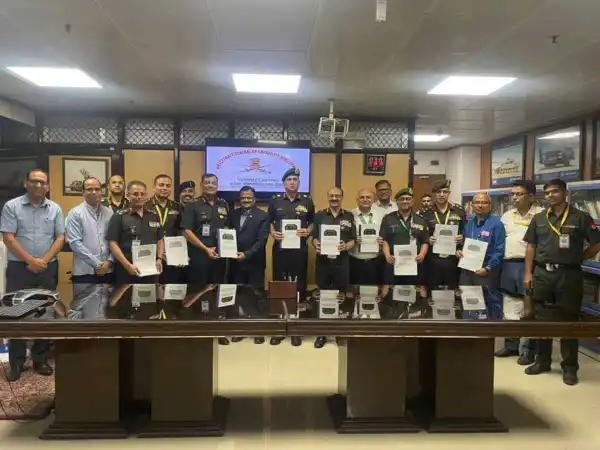The Indian Army has taken a major step toward modernising its communication systems by signing a contract for the procurement of its first batch of indigenously developed Software Defined Radios (SDRs). Designed by the Defence Research and Development Organisation (DRDO) and manufactured by Bharat Electronics Limited (BEL), these advanced radios will strengthen the Army’s secure communication capabilities and improve coordination in network-centric warfare environments.

Advanced Radios for Next-Gen Military Communication
The newly acquired SDRs are equipped with high data transfer rates and Mobile Ad hoc Network (MANET) technology, allowing real-time, encrypted communication across varying terrains and combat zones. The system’s ability to maintain stable connections in dynamic environments makes it a key asset for tactical missions. The Army described the procurement as a milestone in the ongoing effort to enhance digital communication and operational readiness across formations.
A Major Step Toward a Unified Defence Network
This acquisition comes soon after DRDO, in collaboration with the Integrated Defence Staff and the Tri-Services, launched the Indian Radio Software Architecture (IRSA) Version 1.0 — a national standard for software-defined radios. IRSA defines software interfaces, APIs, and waveform standards that enable different communication systems to work seamlessly with one another. It ensures interoperability, certification, and scalability across all branches of the armed forces.
Building a National Defence Tech Ecosystem
The IRSA project, which began in 2021, was the result of joint efforts between DRDO, defence public sector units, private industry, and academic experts. The framework approved in 2025 is expected to create a unified ecosystem for India’s SDR development, supporting both domestic use and international collaboration. The initiative was formally unveiled at DRDO Bhawan in New Delhi, with DRDO Chairman Dr. Samir V. Kamat, Chief of Integrated Defence Staff Air Marshal Ashutosh Dixit, and IIT Gandhinagar Director Rajat Moona among those present.
Driving Self-Reliance in Defence Technology
The introduction of indigenous SDRs represents another leap in India’s Atmanirbhar Bharat mission. These systems will improve interconnectivity among the Army, Navy, and Air Force while reducing reliance on foreign communication platforms. Experts say the standardised software architecture will allow future upgrades to be integrated easily, keeping India’s defence communication systems adaptive and secure.
Strengthening Global Defence Ties
Beyond national use, the IRSA framework is expected to open export opportunities for Indian-made SDR systems. With interoperability as a key design feature, India could emerge as a global supplier of secure, software-defined communication technologies for friendly nations.
